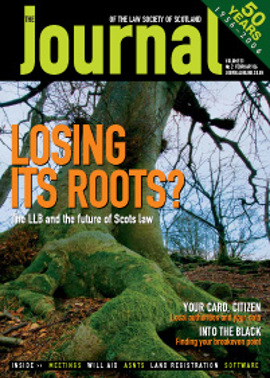Book reviews

For anyone interested in how the law should accommodate religious views in a modern pluralistic society this book is well worth reading. In the first four chapters the writer is determined to convince us that religion can be dangerous, and seems to be writing a rather polemical work. Thankfully this is rectified in later chapters.
Hamilton’s considered message is fairly simple. Legislatures (not judges) should give exemptions from generally applicable laws to religious believers if that is consistent with the public good. Legislatures should grant such exemptions only after full public debate.
In the polemical phase of the book, at page 77, Hamilton seems to advise legislatures not to allow exemptions for religiously motivated conduct that would cause harm to others: “The legislative mantra needs to be that conduct always has the potential to harm, and that as legislators, they are obligated to identify, forestall and deter harm.” However, in the key chapter (10) on page 280, she has reached the more nuanced position that: “When the harm to others is de minimis with the exemption, religious believers should be granted the exemption.”
Hamilton then gives five examples of a legislative exemption she thinks was justified: (1) native Americans using the peyote drug; (2) churches using communion wine during Prohibition;(3) Jews in the armed forces being allowed to wear different headgear; (4) employment by a religious organisation being excluded from discrimination laws; (5) conscientious objection to military draft. She later is uncritical of state legislatures in the US that have permitted parents to opt their children out of sex education and doctors not to perform abortions for religious reasons (page 290). In giving liberty to legislatures to grant exemptions, Hamilton rejects equality as an overriding value (pages 293-295).
Hamilton’s template is a good one. The problem for legislatures is to decide how much harm to permit to others in order to avoid the harm to religious believers of having to act against their conscience? One example where Hamilton thinks it is good that the outcome will vary from legislature to legislature is religious exemptions from laws preventing landlords from discriminating against an unmarried or homosexual couple when renting their property (pages 186-188). Clearly in renting to such a couple a religious landlord, who believes that sex outside of a heterosexual marriage is wrong, may feel that he or she is acting contrary to his or her religious beliefs by condoning such behaviour, or worry about the influence of such behaviour on his or her family, particularly if the tenants are living in part of the landlord’s home. On the other hand the harm to potential tenants becomes more significant the larger the percentage of believers in the community who would take advantage of the exemption. Perversely therefore it is easier for legislatures to give religious exemptions to unusual religious beliefs than to mainstream ones, because the impact on the rest of the community is much less.
UK readers might be surprised to learn that it was under President Bill Clinton, rather than a Republican, that the US Congress passed legislation increasing the rights of religious bodies: the Religious Freedom Restoration Act 1993 and the Religious Land Use and Institutionalized Persons Act 2000. The latter was passed after the former was struck down by the US Supreme Court in 1997 in City of Boerne. Hamilton represented Boerne, but one of the book’s sadnesses is the lack of analysis of the case (just pages 236-237), despite chapter 8 being headed “Boerne v. Floeres: The case that fully restored the rule of law for religious entities”. The historical development of religious liberty in the US is interestingly handled in chapter 9 with a study of the influence of Protestant sermons on the emerging legal landscape there. (It is lamentable that Hamilton does not understand the difference between England and Britain, often referring to the latter when describing the position in England before 1707.)
The book is excellently researched and the writer has ideas. She has worked as an advocate for many people who claim to be harmed by the behaviour of religious groups, and in places writes as though she were still their advocate. Nevertheless her scholarly integrity wins through, despite a return to polemic in the epilogue, and the book is worth the relatively modest investment of the cover price.
Paul Beaumont, Professor of Law, University of Aberdeen
In this issue
- Legal aid in children's hearing referrals
- Still waters run deep
- Catch-up or patch-up?
- Legal science or law-lite?
- Heads above water
- Your name on file
- A welcome addition
- Another ***** meeting?
- A neglected asset
- Planning a year of action
- The Pagan mission
- A good case to read
- Jurisdiction: dispelling the myth
- That special something
- The art of cashing in
- Scottish Solicitors' Discipline Tribunal
- Website reviews
- Book reviews
- In on the Act
- Keeper's corner






